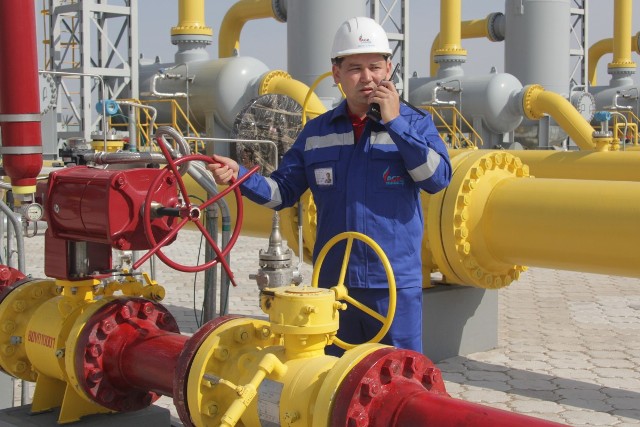by Shriprakash R Pandey, Chairman & Managing Director, Commtel Networks
The Oil and Gas (O&G) industry is crucial for India and the world. The complexity and magnitude of an O&G refinery redefine scale. To give an idea of the size of an O&G refinery, one of the largest ones in India has an area of approximately 7,500 acres (about 30 sq. kilometres), consisting of the manufacturing and allied facilities, utilities, off-sites, port facilities, and an employee township.
Several pipelines bring in and carry out the product, which can often extend to thousands of kilometres. And considering these pipelines carry an extremely flammable product that has the potential to cause harm to humans and the environment if mishaps occur, these pipelines need supervision as rigorously as the plant itself. Generally, the monitoring stations are placed every 20-km to 50-km of the Pipeline. An O&G refinery and its extensions could have close to 10,000 or more monitoring points, each capturing and processing enormous data every second.
Various communication technologies for O&G require customers to harness and leverage the plant data and support operations, security, and safety. In Commtel’s deployments these mission-critical communications include applications such as local and wide-area networking, analog/ IP voice/ video communications, radio communications, satellite communications, public address, video surveillance, physical access control, and intrusion prevention, and many more. Traditionally, disparate communication systems have got operated and managed individually. However, with the advent of IIoT and the inherent intelligence of the edge components, mission-critical communications are no longer simply a collection of data, voice, and video transport technologies. It is now evolving as a 'network-of-networks' unifying the underlying communication systems and not only transporting the data but leveraging it to enable and provide smarter, efficient, fault-tolerant, and real-time collaboration among machines and humans. We call it 'Unified Critical Communications'.
To understand this better, think of Unified Critical Communications as one which harnesses many technologies seamlessly to accomplish the mission. It integrates and automates the disparate systems, selects the best option for every task, and provides deep insights into its operations. Unified Critical Communications binds the high-speed, scalable, and deterministic data backbone with the underlying user communication to create harmony among the various technologies like DWDM/ MPLS/ SD-WAN, IP/ Ethernet, Voice/ Video, and time-critical control protocols.
Unified communications today, has moved beyond merely sharing the communication paths to the actual sharing of data and content across systems. It has empowered the O&G industry electronically like never-before by providing real-time data across systems, enabling quick and informed decision-making. This facilitation has been possible through the recent development of universal data interfaces, APIs, protocol converters, cross-platform plug-ins, and advanced analytics platforms to crunch the data.
The networks and systems for Oil & Gas are designed to very stringent standards specifically developed for the industry, ensuring high levels of safety, security, reliability, and resiliency.
These standards cover every aspect of the system, beginning from the network architecture and performance requirements, to stringent electrical, environmental, material, and equipment specifications. Most major international Oil & Gas companies have developed their own set of standards to meet their specific needs along with strict specifications defined by standards bodies such as IEC, UL, EIA/TIA, and ETSI. Critical applications like security and process control often operate on infrastructure that is completely isolated from any other networks. With deep insights and compliance tools, Unified Critical Communications help the end-user conform to the standards and regulations.
The benefits of using Unified Critical Communications technology are immense. It increases the reliability of information sharing, reduces overheads, creates better response time, and workers feel more secure with trustworthy information in their hands which helps them react more confidently to situations they face.
The Unified Critical Communications technology must be simple, secure, and flexible. It should be fail-safe, minimize data blackspots, also be future-proof, and robustly work even when newer technologies are introduced years later into the system. The key to establishing a robust and critical communications system is to use the ‘best technology’ principle, as different technologies bring different benefits, and Unified Critical Communications aims to host the best together. However, these varied technologies must work faultlessly together. The goal of any Unified Critical Communications is to optimize and automate operations, by establishing a node-to-node connection between thousands of data generation points, all of which exchange data in real-time.
Let us also peek into the very near future of Unified Critical Communications, a path that Commtel has already embarked on. The fibre optic cables that carry Unified Critical Communications are full of terabytes of data constantly flowing through them. A data-scientist mind is needed to continuously figure how this big data can be analysed and create autonomous systems that learn through ML/AI. Such a system allows to predict a situation, prevent a mishap, and helps the preservation of all mission-critical systems.
Our latest innovation, CN-SHIELD, whose first implementation is already underway, is an artificial intelligence software solution that unifies all assets, monitors, assesses the data, and implements faster and cohesive 360-degree protection. It enables novel ways to deal with the threats associated with the present-day cyber-physical systems. It provides customers the power to collect data from myriad devices and systems on a single data processing platform. We believe this will be the future of Unified Critical Communications, and I can confidently say it is also ours.






